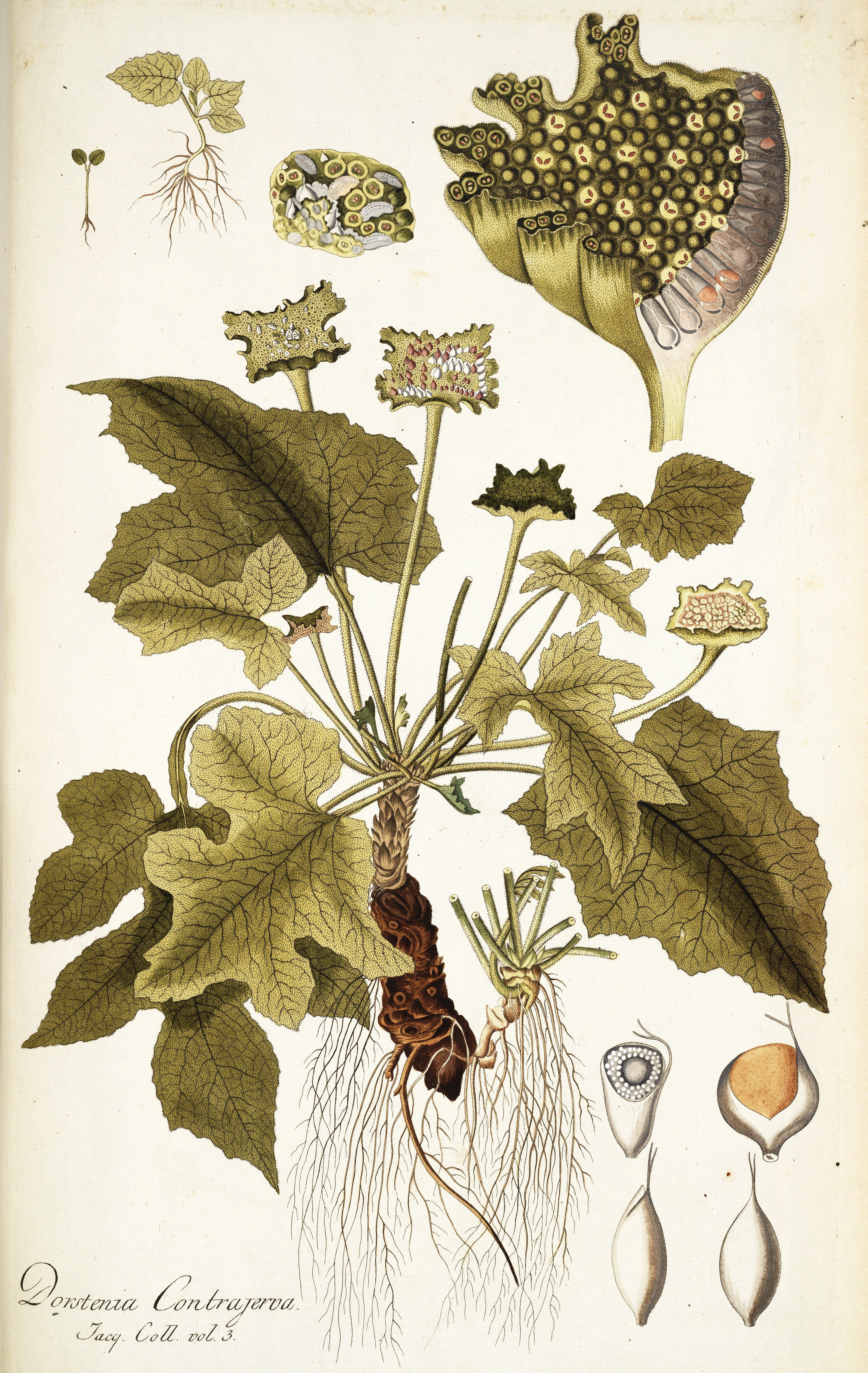|
Dorstenia Foetida
Dorstenia foetida, also known as grendelion, is a succulent plant in the genus ''Dorstenia'', which is native to Eastern Africa and Arabia. It is a very variable species with a wide distribution. Description A very variable species especially in shape and size of leaves, and length of petioles and stipules. It is a perennial, evergreen or caducous sub-shrub. Stem succulent, may be branched or not. Stem a thick, dark green- to mahogany-colored conical trunk, up to 15 centimeters in diameter and 30–40 centimeters in height, older parts often with peeling bark. The stem bears conspicuous and prominent round scars of petioles, inflorescences and stipules in a spiral pattern. Branches nearly as thick as the stem, up to 1–1.5 cm thick and up to 15 cm tall, with pronounced markings of leaf-, inflorescence- and stipule-scars. Leaves alternate, crowded at the top of stems and branches; stipules subulate from a broad base, 1–2 mm long, mostly long persistent; peti ... [...More Info...] [...Related Items...] OR: [Wikipedia] [Google] [Baidu] |
Georg August Schweinfurth
Georg August Schweinfurth (29 December 1836 – 19 September 1925) was a Baltic Germans, Baltic German botanist and ethnologist who explored East Central Africa. Life and explorations He was born at Riga, Latvia, then part of the Russian Empire. He was educated at the universities of Heidelberg, Munich and Berlin (1856–1862), where he particularly devoted himself to botany and palaeontology. Commissioned to arrange the collections brought from Sudan by Adalbert von Barnim and Robert Hartmann (naturalist), Robert Hartmann, his attention was directed to that region; and in 1863, he travelled round the shores of the Red Sea, repeatedly traversed the district between that sea and the Nile, passed on to Khartoum, and returned to Europe in 1866. In 1866, botanist A.Braun published ''Schweinfurthia (plant), Schweinfurthia'' which is a genus of flowering plants from Africa and Asia, belonging to the family Plantaginaceae and named in Georg August Schweinfurth's honour. His resear ... [...More Info...] [...Related Items...] OR: [Wikipedia] [Google] [Baidu] |
Dorstenia
''Dorstenia'' is a genus within the mulberry family, Moraceae. Depending on the author, there are said to be 100 to 170 species within this genus, second only in number to the genus ''Ficus'' within Moraceae. ''Plants of the World Online'' currently accepts 122 species. ''Dorstenia'' species are mainly known for their unusual inflorescences and growth habits. ''Dorstenia'' is named in honor of the German physician and botanist Theodor Dorsten (1492–1552).Genaust, Helmut (1976). ''Etymologisches Wörterbuch der botanischen Pflanzennamen'' The type species is '' Dorstenia contrajerva''. Growth habit ''Dorstenia'' is unique in the family Moraceae because of the extremely diverse growth habits and forms of its species. While the majority of Moraceae are woody perennials, ''Dorstenia'' species are predominantly herbaceous, succulent, or suffrutescent perennials. Only 10% exhibit the typical woody habit of the Moraceae. The spectrum of the genus ''Dorstenia'' ranges from small ... [...More Info...] [...Related Items...] OR: [Wikipedia] [Google] [Baidu] |
Arabia
The Arabian Peninsula (, , or , , ) or Arabia, is a peninsula in West Asia, situated north-east of Africa on the Arabian plate. At , comparable in size to India, the Arabian Peninsula is the largest peninsula in the world. Geographically, the Arabian Peninsula comprises Bahrain, Kuwait, Oman, Qatar, Saudi Arabia, the United Arab Emirates (UAE) and Yemen, as well as southern Iraq and Jordan. The largest of these is Saudi Arabia. In the Roman era, the Sinai Peninsula was also considered a part of Arabia. The Arabian Peninsula formed as a result of the rifting of the Red Sea between 56 and 23 million years ago, and is bordered by the Red Sea to the west and south-west, the Persian Gulf and the Gulf of Oman to the north-east, the Levant and Mesopotamia to the north and the Arabian Sea and the Indian Ocean to the south-east. The peninsula plays a critical geopolitical role in the Arab world and globally due to its vast reserves of petroleum, oil and natural gas. Before the mod ... [...More Info...] [...Related Items...] OR: [Wikipedia] [Google] [Baidu] |
Dorstenia Foetida 002
''Dorstenia'' is a genus within the mulberry family, Moraceae. Depending on the author, there are said to be 100 to 170 species within this genus, second only in number to the genus ''Ficus'' within Moraceae. ''Plants of the World Online'' currently accepts 122 species. ''Dorstenia'' species are mainly known for their unusual inflorescences and growth habits. ''Dorstenia'' is named in honor of the German physician and botanist Theodor Dorsten (1492–1552).Genaust, Helmut (1976). ''Etymologisches Wörterbuch der botanischen Pflanzennamen'' The type species is '' Dorstenia contrajerva''. Growth habit ''Dorstenia'' is unique in the family Moraceae because of the extremely diverse growth habits and forms of its species. While the majority of Moraceae are woody perennials, ''Dorstenia'' species are predominantly herbaceous, succulent, or suffrutescent perennials. Only 10% exhibit the typical woody habit of the Moraceae. The spectrum of the genus ''Dorstenia'' ranges from small ... [...More Info...] [...Related Items...] OR: [Wikipedia] [Google] [Baidu] |
